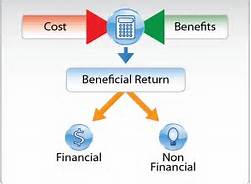
“Inclusion” is Big Business
Workforce Diversity and Inclusion is a concept that appears to have taken hold in companies worldwide. According to a survey conducted by SHRM, 55% of respondents say their organizations “strongly promote” Diversity and Inclusion. However, the interpretations of the phrase and the methods used to achieve and measure this goal vary widely among companies and regions. In companies with the most successful Diversity programs, the impetus and tone emanate from the most senior ranks of the organization. According to SHRM, sixty percent of respondents to the survey say the main advocates for Diversity and Inclusion in their organizations are the CEO and top management, followed by heads of HR (42%). Most companies recognize that “Diversity” and “Inclusion” are closely linked; Inclusion helps to ensure that employees from diverse backgrounds are able to contribute, remain with the company and flourish (SHRM Report: Global Diversity and Inclusion: Perceptions, Practices and Attitudes).
These facts notwithstanding, how can a diversity executive report to the CEO or Board of Directors that the organization is now 5 percent more inclusive than the year before and quantify what effect that statement has on the bottom line? In the absence of direct measures, it’s often necessary to rely on indirect observations to determine if goals are being achieved. Key Performance Indicators (KPI’s) such as engagement scores, retention rates, productivity measures and diversity representation at various tiers often must be combined as an “Index value” to create a broader picture of an inclusion strategy’s impact on the overall organizational culture.

Creating Evidence-based Measures
I recommend that in order to effectively create an “evidence-based” measure of “inclusion”, a multi-faceted approach must be used. There are several prerequisites:
To measure inclusion, diversity executives should:
1) Review their current definition of Inclusion and drivers behind the organization’s inclusion initiative to make sure they describe the desired cultural effect as well as the employee behaviors expected to achieve the desired results. Establishing a behaviorally-specific definition for inclusion that spells out measurable elements and is understood across the entire organization can maintain focus and help develop analytics that influence organizational performance.
2) Align the organization’s inclusion definition and drivers with strategic organizational goals. If the organization needs to improve its talent pipeline, weave inclusion initiatives into existing talent management functions. If increasing innovation is critical, promote inclusion programs that will facilitate knowledge sharing. Both of these goals may require raising awareness of the employment brand by competing to become an employer of choice.
3) As organizational goals help to develop drivers, and drivers help to develop programs to support those goals, be sure to evaluate the business and Diversity ROI impact to ensure programs are having an effect. Select or develop metrics that circle back to align with the original drivers. By carefully articulating outcomes, organizations can define measures that assess the impact of their inclusion strategy. For a concept as ephemeral as inclusion, multiple qualitative, quantitative, effectiveness and efficiency metrics may be required to imply success or indicate the need for a course change.
Sample Inclusion Items
Here are a few sample items from one of our Hubbard & Hubbard, Inc. Inclusion surveys that reflect these ideas:
1. I can be fully myself around here without having to compromise or hide any part of who I am.
2. In a group, I am able to be fully part of the whole while retaining a sense of authenticity and uniqueness which reflects who I am.
3. Different views and opinions are valued in decision-making.
4. It is generally safe to say what you think.
5. I feel safe, trusted, accepted, respected, supported, valued, fulfilled, engaged, and can be authentic in my working environment
Use Even-numbered Response Scales
I have found it helpful to use an “even numbered” response scale that encourages the respondent to determine if this item ‘is’ or ‘is not’ true for them rather than somewhere in the middle. You can use “even numbered” scales such as:
- Strongly Disagree
- Disagree
- Mildly Disagree
- Mildly Agree
- Agree
- Strongly Agree
This also guides you towards a more definitive action plan that is firmly rooted in addressing specific problems and opportunities.
Inclusion Definitions Must be Behaviorally Specific
In order to measure the ROI of Inclusion, the definition of Inclusion that is used must be crafted in behaviorally-specific terms that are measurable. This aligns your work to show the “chain-of-impact” that links the change to your initiative’s outcomes. Here are a few examples of Inclusion definitions that imply a measurement connection:
I define Inclusiveness this way… (I have separated elements of the definition such that you can see some of the measurable components):
- “Inclusiveness is the act or process of utilizing the information, tools, skills, insights, and other talents that each individual has to offer which results in the measurable, mutual benefit (and gain) of everyone.
- It also includes providing everyone with opportunities to contribute their thoughts, ideas, and concerns.
- Inclusiveness results in people feeling valued and respected.”
Wikipedia defines Inclusion as: “practice of insuring that people in organizations feel they belong”. Thus, in order to measure the impact of inclusion you must begin by defining what it means to “belong” in behaviorally specific terms.
Miller and Katz (2002) present a common definition of an inclusive value system where they say, “Inclusion is a sense of belonging: feeling respected, valued for who you are; feeling a level of supportive energy and commitment from others so that you can do your best work.” (Book: “The Inclusion Breakthrough” by Frederick Miller and Dr. Judith Katz)
Another definition from Wikipedia discusses Inclusion, when applied, it creates
- A shift in organization culture. The process of inclusion engages each individual and makes ‘people feeling valued’ essential to the success of the organization.
- Individuals function at full capacity, feel more valued, and included in the organization’s mission. This culture shift creates higher performing organizations where motivation and morale soar.
From a measurement point of view, using this Wikipedia definition would require metrics and processes that track and evaluate shifts in organizational culture, engagement, individual perceptions of value, levels of individual functioning, etc.
These few examples highlight some of the requirement to accurately start to report the ROI of Inclusion. It will require strict adherence to a Diversity ROI measurement process and framework that demonstrates a “chain-of-impact” or “chain-of-evidence” that clearly shows that the Inclusion intervention or initiative was a major source of the calculated ROI impact.
In future Blogs, I will further discuss measuring the ROI impact of Inclusion. In addition; let me know what you think about this approach. If you have other guidelines that have been beneficial in your experience, tell us. We will share your examples such that others can learn and grow.
Dr. Ed Hubbard is an expert in Organizational Behavior, Organizational Analysis, Applied Performance Improvement and Measurement Strategies, Strategic Planning, Diversity Measurement, and Organizational Change Methodologies. Dr. Hubbard earned Bachelors and Masters Degrees from The Ohio State University and earned a Ph.D. with Honors in Business Administration. Dr. Hubbard is available for presentations, conferences, training, consulting and can be reached at edhub@aol.com or 707-481-2268.
 There has been a shift from faith-based to fact-based investing. Soft functions such as a leadership development, employee engagement or diverse work team programs are often assumed to be making a difference. This suggests it would be difficult to measure and place a monetary value on the project, and more difficult to connect the particular initiative to a business impact measure.
There has been a shift from faith-based to fact-based investing. Soft functions such as a leadership development, employee engagement or diverse work team programs are often assumed to be making a difference. This suggests it would be difficult to measure and place a monetary value on the project, and more difficult to connect the particular initiative to a business impact measure.